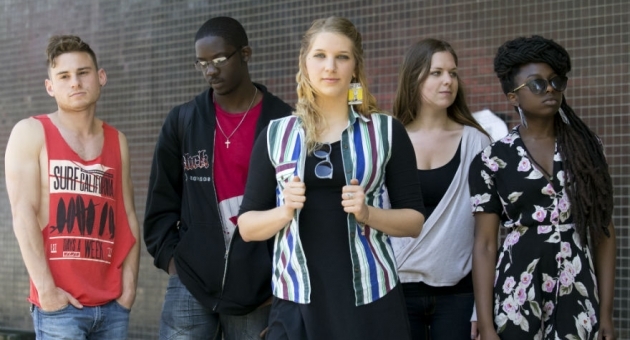Hipster prototype evolved from cultural disconnection, research shows

The topic of Victoria Marchiony’s senior research project is sure to spark a dialogue among members of the millennial generation. The journalism major devoted her final semester at the Temple University School of Media and Communication to finding out what makes “hipsters” tick.
She started by looking at how the hipster—defined by Urban Dictionary as “a subculture of men and women typically in their 20s and 30s that value independent thinking, counter-culture, progressive politics, an appreciation of art and indie rock, creativity, intelligence and witty banter”—is generally portrayed in the media.
She found that in the media, that character is most frequently described as a white male aged between 20 and 35 from an affluent suburb, who has moved to a city’s gentrified neighborhood. He is middle class, college educated and a little scruffy. He surrounds himself with consumer goods that are symbols of his individualism, even items that come from other ethnic cultures. Marchiony contends that he rejects being called a hipster, though—his individualistic behavior is so predictable, it negates his uniqueness.
Through interviews of a dozen millennials in Philadelphia, New York and Baltimore, she then she set out to discover why the hipster prototype is white. “What is it about whiteness that is so conducive to the essential spirit of hipsterdom?” she asked.
She found that a significant population of white Americans have lost a sense of connection to their ethnic origins. According to Marchiony, it is that group that has become the breeding ground for hipster culture. Hipsters see their whiteness as lacking in “a cool, oppositional cultural backing,” she said. Instead, hipsters fill the void with “sounds, symbols, styles, slang (and) cultural artifacts—powered by the internet and egged on by consumer culture.”
Marchiony grew up in suburban Ardmore, Pennsylvania, and described herself as falling under the hipster umbrella. “The rhetoric of color blindness in this country is very confusing for white people,” she said. “I say that from a self-reflective place. I grew up yelling at my parents that I had no culture, and then I’m looking around my room and realizing the symbolic consumptive appropriation going on. I’m looking for myself in objects.”
She recalled a moment of self-realization when she examined a Mexican sugar skull—a part of the holiday of Día de los Muertos (Day of the Dead)—she had in her room. It is a strong cultural symbol to which she has no genuine connection. Marchiony liked it and purchased it because it was different. “I started to like it less as I saw it other places,” she explained. “Once other people got on board, it made it less cool.”
Assistant Professor Brooke Duffy worked with Marchiony on her research. “The ways in which media organizations and marketers construct audiences have important implications for how members of various social groups understand themselves and their role in various cultural settings,” she said.
“Tori's research aims to de-naturalize these constructions by encouraging young people to reflect on their own presentations of self. Her project makes a compelling argument about narratives of identity and individualism at a time when many traditional understandings of the self are in flux.”
- Jeff Cronin